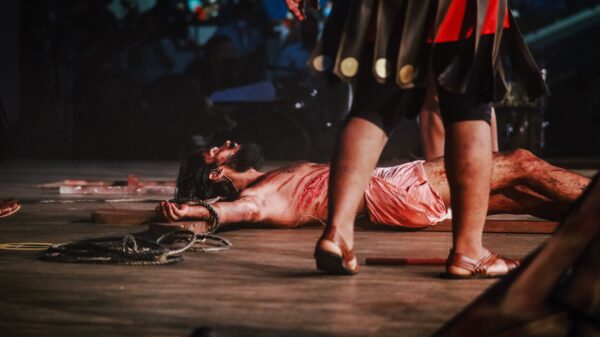Welcome to the magical world of movies, where stories come alive and characters jump off the screen! Have you ever wondered what happens behind the scenes of your favorite films? Well, get ready for a thrilling ride as we take you on an exciting journey into the art and craft of movie making. From pre-production to post-production, we’ll explore every aspect that goes into creating a cinematic masterpiece. So grab some popcorn and settle in – it’s time to discover all the secrets that make movie magic happen!
Introduction to the Art and Craft of Movie Making
Movie making is both an art and a craft. It takes a special kind of person to be able to do both. The art of movie making is the ability to tell a story through the use of visuals and sound. The craft of movie making is the ability to create those visuals and sound in a way that is entertaining and engaging.
Movie making is a unique form of art because it combines two other forms of art, visual arts and storytelling. A good movie maker must be able to understand both forms of art and how they work together. The best movies are those that are able to tell a great story while also providing beautiful visuals.
The craft of movie making is just as important as the art. A good movie maker must be able to create visuals that are interesting and engage the viewer. They must also be able to create sounds that add to the overall experience. Without these two elements, a movie will not be successful.
Movie making is a difficult process but it is one that can be extremely rewarding. Those who are able to master both the art and the craft of movie making will be able to create films that are truly special.
Pre-Production: Story Development, Script Writing and Casting
Pre-production is the process of getting a movie ready to shoot. It includes developing the story, writing the script and casting the actors.
Developing the story is the first step in pre-production. The story is the foundation of the movie, so it’s important to get it right. To develop a good story, you need to know your characters and what they want. You also need to know your setting and what’s at stake. Once you have all of this information, you can start to write the script.
Writing the script is one of the most important parts of pre-production. The script is what brings the story to life. It’s important to make sure that the dialogue sounds natural and that the action flows well. Once the script is written, it’s time to start casting the actors.
Casting is an important part of pre-production because it can make or break a movie. When casting, you need to find actors who are right for their roles. You also need to make sure that they’re available and willing to work on your movie. Once you’ve found the perfect cast, you’re ready to move on to production.
Production: Camera Work, Lighting, Sound Design, and Special Effects
In order to create a successful film, every element must come together perfectly. This is especially true for the production team who are responsible for the camera work, lighting, sound design, and special effects.
A film’s success relies heavily on the production team’s ability to execute the director’s vision. They are responsible for creating the look and feel of the film through their use of lighting and camera work. They must also ensure that all of the audio elements are perfectly in sync and that any special effects are flawlessly executed.
It takes a great deal of skill and experience to be a part of a successful production team. These individuals must have a keen eye for detail and a passion for their craft in order to create films that audiences will love.
Post-Production: Editing, Score and Visual Effects
After the filming is complete, the post-production process begins. This is where the footage is edited together and the score and visual effects are added.
The editor’s job is to take all of the footage that was filmed and cut it down to only the best takes. They also have to make sure that the footage flows together smoothly and makes sense.
The score is composed by a composer and is used to add emotion and drama to the film. It can also be used to cover up any awkward silences in the dialogue.
Visual effects are used to add anything that couldn’t be filmed in real life. This could be things like explosions, aliens or flying cars. Visual effects are also used to improve the look of the film, such as making the colours more vibrant or adding CGI characters.
Distribution & Promotion
The distribution and promotion of a movie is just as important as the filmmaking process itself. Movies need to be distributed to theaters, DVD/Blu-ray retailers, and online streaming services, and promoted through trailers, posters, social media, and other marketing channels.
The distribution process begins with the sale of the movie to a distributor. The distributor then works with theaters to book screenings and promote the movie. Once the movie is released, the distributor sells copies to DVD/Blu-ray retailers and online streaming services.
The promotion of a movie begins long before its release. Studios create trailers and posters to generate interest in the movie. Social media is used to build buzz and connect with potential viewers. Other marketing efforts may include TV commercials, radio spots, print ads, and celebrity endorsements.
Challenges & Opportunities in the Movie Industry
The movie industry is evolving rapidly, and with that comes both challenges and opportunities. As the industry becomes more competitive, it’s important to be aware of the challenges and how to overcome them.
One of the biggest challenges facing the movie industry is piracy. With technology becoming more sophisticated, it’s easier than ever for people to illegally download or stream movies. This not only hurts the bottom line of studios and producers, but it also takes away from the theatrical experience.
Another challenge is finding new ways to market movies. With so many options available, it can be difficult to break through the clutter and get people interested in a particular film. Traditional marketing methods like advertising may not be as effective as they once were. Instead, studios need to get creative and find new ways to reach potential audiences.
Despite these challenges, there are still plenty of opportunities in the movie industry. Technology has made it easier than ever to produce high-quality films on a smaller budget. This has opened up the industry to a whole new generation of filmmakers. Additionally, there’s a growing demand for content that is diverse and reflective of different cultures and perspectives. Studios that can meet this demand will be well-positioned for success in the years ahead.
Conclusion
Making a movie is no easy task and requires immense amounts of creativity, ingenuity, and hard work. From writing the script to editing the final cut, each step in creating a film is an artform in itself. With this article we have tried to provide you with some insight into the inner workings behind the scenes of movie making and help you understand that it isn’t all glamour; there’s much more to it than meets the eye. We hope you have enjoyed reading about this fascinating craft and perhaps picked up some tips from our team of professionals along the way.










